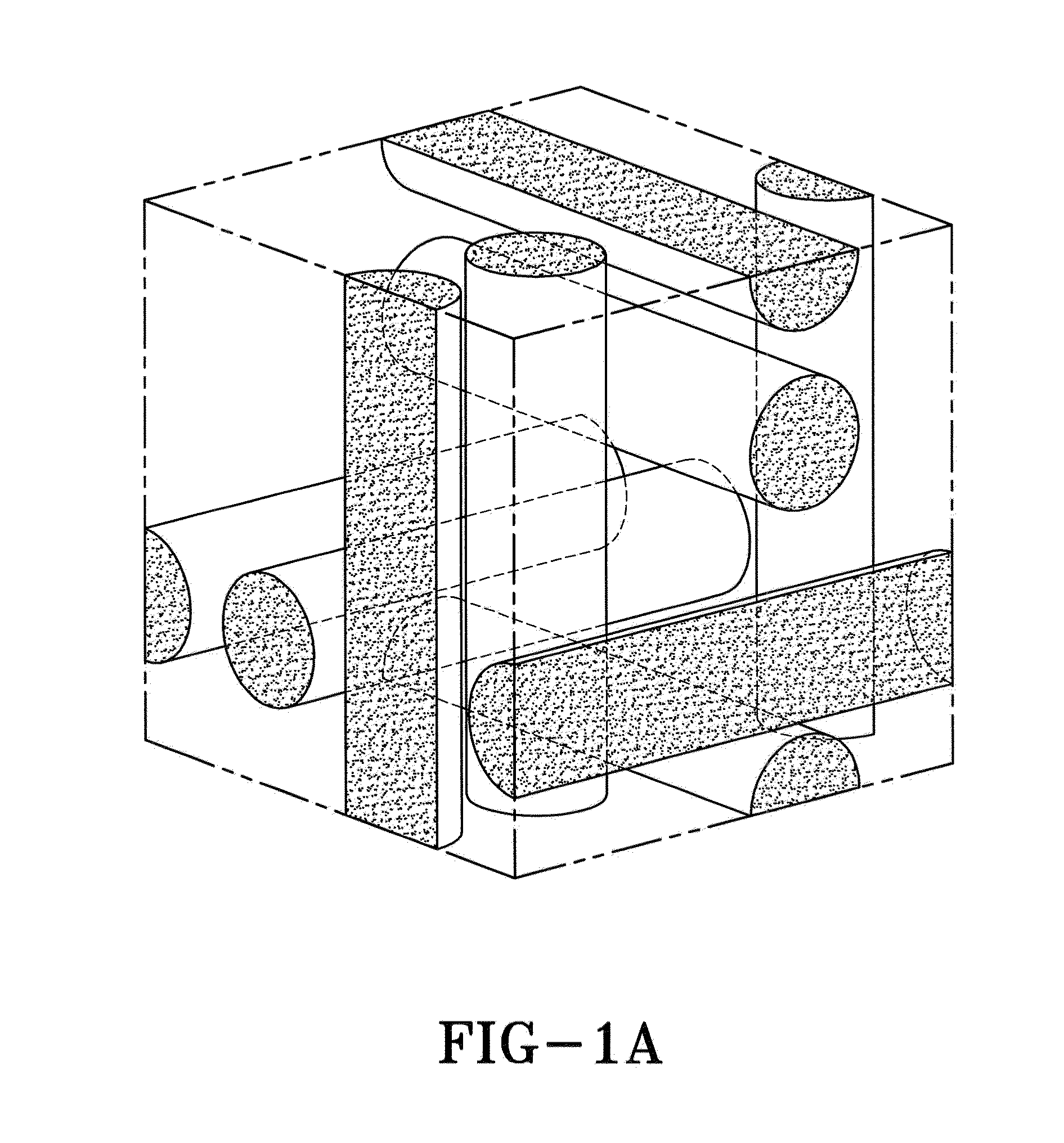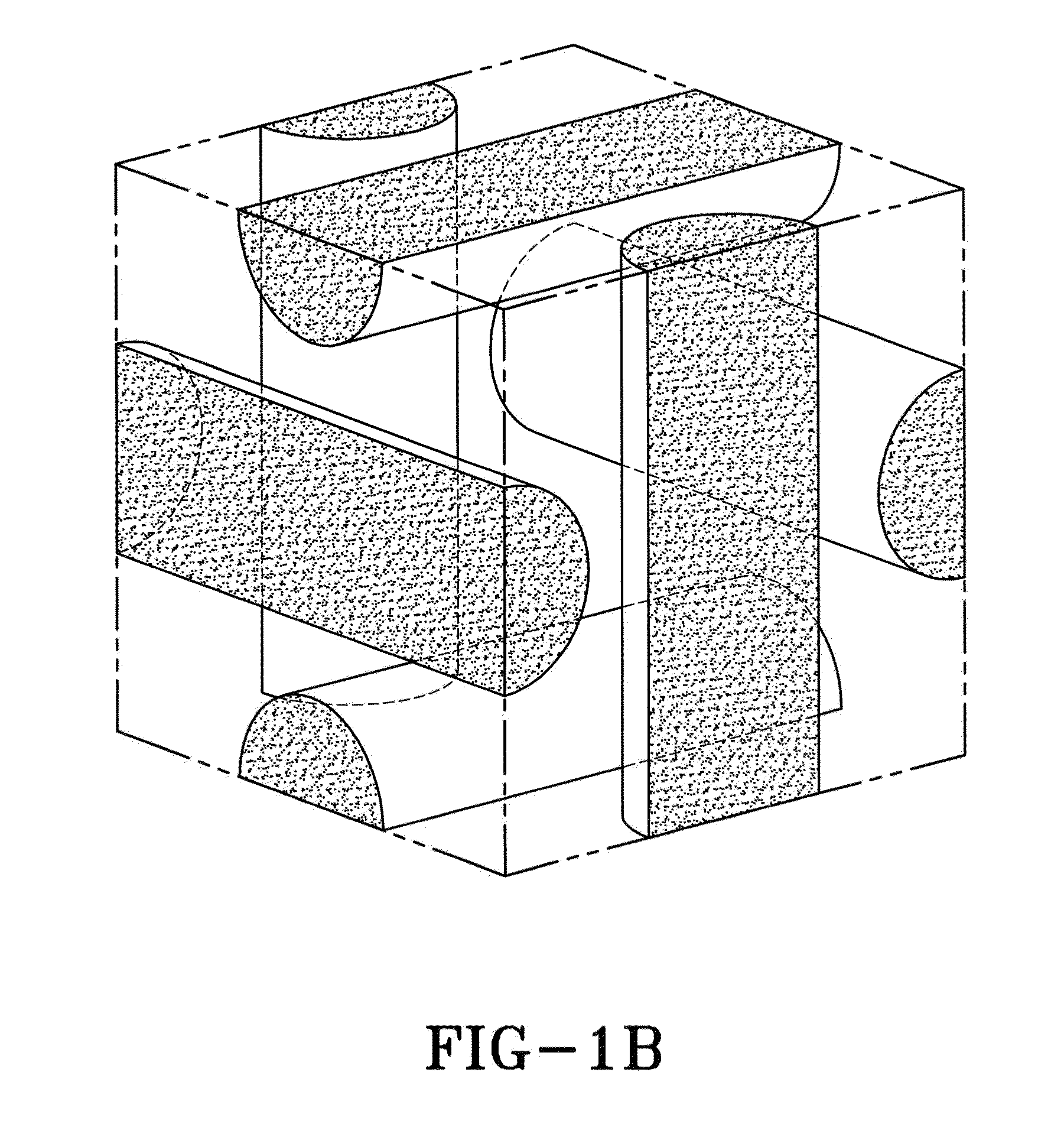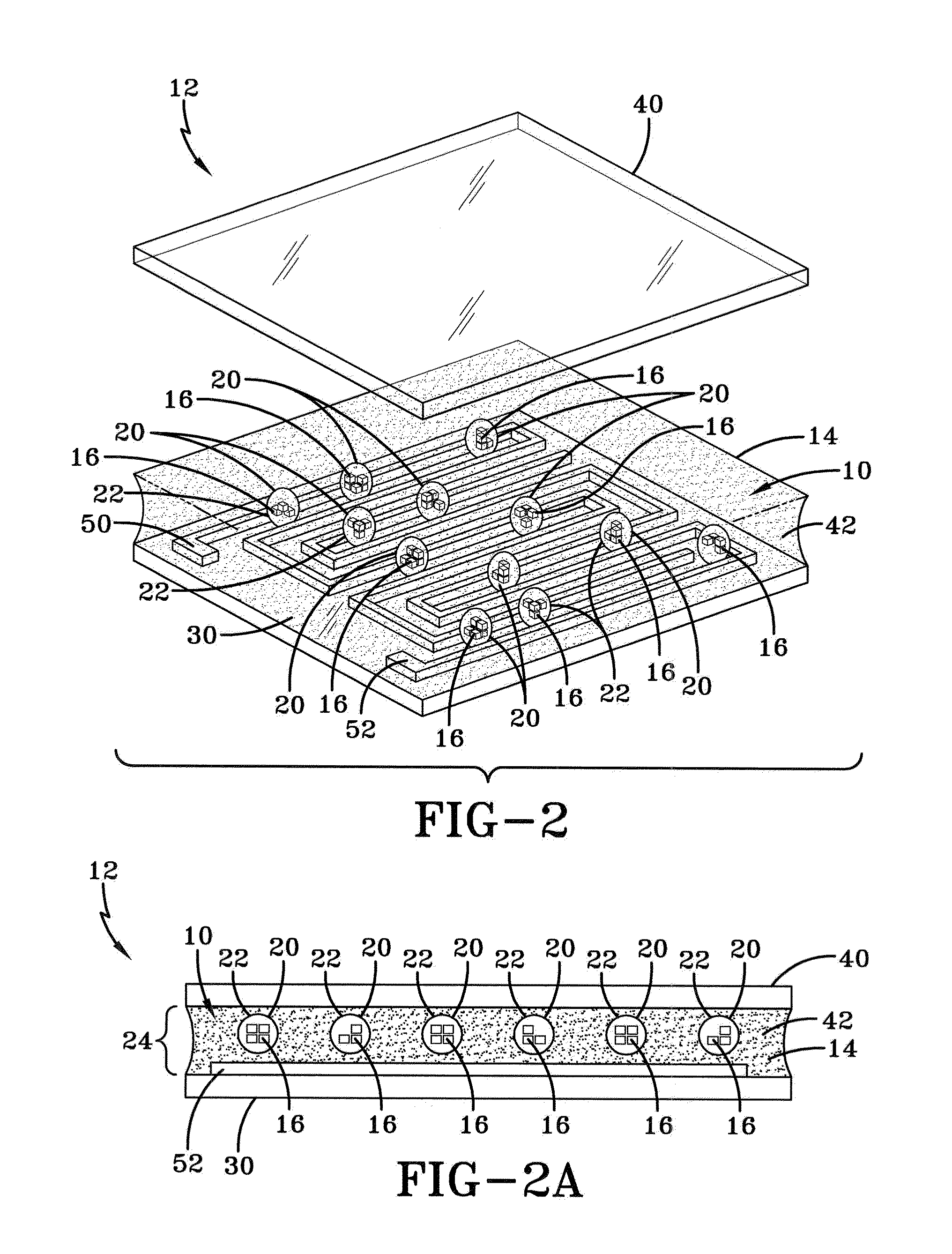Polymer-dispersed blue-phase liquid crystal films
a liquid crystal film and polymer technology, applied in the field of liquid crystal materials, can solve the problems of reducing the production efficiency and reducing the production cost of liquid crystal cells or devices. the effect of improving the polymer stabilized temperature rang
- Summary
- Abstract
- Description
- Claims
- Application Information
AI Technical Summary
Benefits of technology
Problems solved by technology
Method used
Image
Examples
example 1
[0075]Encapsulated blue phase droplets were identified before and after polymerization by placing the samples under a polarizing optical microscope, equipped with a hot-stage temperature controller, and between crossed polarizers. All samples were heated to the isotropic phase and then cooled to room temperature at a rate of about −0.2° C. / min. FIGS. 13A-B show photomicrographs of sample 1 before (FIG. 13A) and after (FIG. 13B) polymer stabilization. The blue phase temperature is found between 40° C. and 32° C. before the polymerization, and the size of the droplets are in the range of between about 30 μm and 100 μm. After the polymerization, the isotropic to blue phase transition temperature is increased to about 55° C., and the droplet size was measured to be between about 20 μm and about 100 μm. After polymerization, it was observed that some of the small droplets were in the cholesteric phase, whereas bigger droplets exhibit the blue phase. With polymer stabilization, strong int...
example 2
[0077]FIG. 14 shows the reflection spectra as a function of temperature of sample 4 with addition of 1% of gelatin. The reflected wavelength of PDBP after polymer stabilization was found independent of temperature ramping up or down. The reflected wavelength appeared at 447 nm and 444 nm for the BPII and BPI. Since sample 4 has more uniform and dense droplets, its Bragg reflectance is intense.
example 3
[0078]The following is an example of test and qualification of the electro-optical (EO) properties of polymer stabilization of PDBP samples using in-plane-switching (IPS) liquid crystal cells. The IPS cells were prepared with one substrate having lithographically-patterned electrodes with a 10-μm electrode line width and 10 μm spacing, while the opposite substrate did not include an electrode. The cell gap between these two substrates was maintained at about 15 μm by ball spacers. The voltage-dependent light transmittance (V-T) curves of the polymer stabilized PDBP (PS-PDBP) cells was measured with an apparatus that included a linearly polarized He—Ne laser light beam passing through a polarizer with optical axis at approxiamtely 0°, whereby the electrode direction of an IPS cell was at an angle of about 45° with respect to the first polarizer, and the optical axis of analyzer was about 90°. Upon application of an electric field, the cell of the encapsulated PS-PDBP sample induced a...
PUM
| Property | Measurement | Unit |
|---|---|---|
| thickness | aaaaa | aaaaa |
| operating temperature | aaaaa | aaaaa |
| operating temperature | aaaaa | aaaaa |
Abstract
Description
Claims
Application Information
 Login to View More
Login to View More - R&D
- Intellectual Property
- Life Sciences
- Materials
- Tech Scout
- Unparalleled Data Quality
- Higher Quality Content
- 60% Fewer Hallucinations
Browse by: Latest US Patents, China's latest patents, Technical Efficacy Thesaurus, Application Domain, Technology Topic, Popular Technical Reports.
© 2025 PatSnap. All rights reserved.Legal|Privacy policy|Modern Slavery Act Transparency Statement|Sitemap|About US| Contact US: help@patsnap.com



